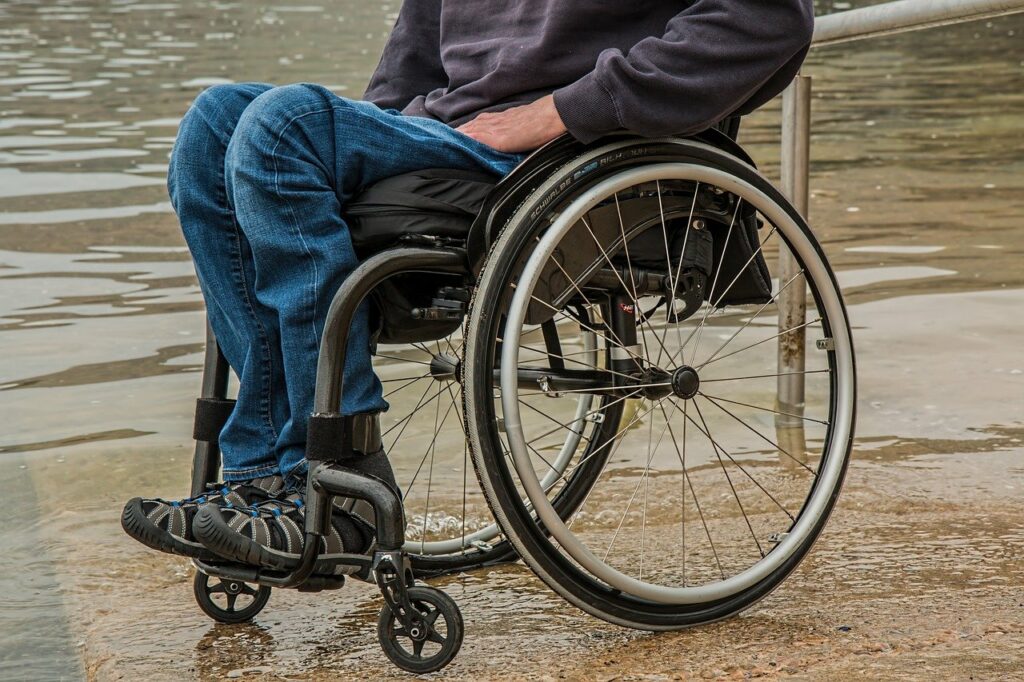Despite physical limitations, you can be mobile with your own car. For people with disabilities, having their own car makes everyday life easier. And it drives with tailor-made technology. Almost every car is suitable for a conversion. Car expert Andreas Kessler knows which individual solutions are available.

Mobility for the mobility impaired
In many a car magazine you can always see brand-new, shiny vehicles, mostly in anthracite or silver metallic. On the picture are either young dynamic guys who are just about to close the next deal. Or a happy family with a dog, whose whole equipment can easily fit in the car. But there is never a target group: Those of us who, due to disabilities, are unable or very difficult to participate in the individual mobility that characterizes and drives our society forward.
Why is this so? For one thing, the target group is simply too small for today’s quantities and for another, no two disabilities are alike. Therefore, one would have to present the resulting abundance of possibilities for a handicapped accessible reconstruction. And that is obviously too much for advertisers.
What can be converted to be handicapped accessible?
Steering/brake system
Electronic/digital controls are used here, which are TÜV-tested and suitable for every type of vehicle. Such conversions have been developed for people with paraplegia or force and movement restrictions.
The installations can consist of a gas brake system, a 2-4-way joystick, mini steering wheel and Gear-Control (control unit for operating the transmission). Once installed, a conversion can thus be adapted at any time with little effort in case of changes in the clinical picture. All components for operating the steering and brakes can be positioned freely, so theoretically you could drive the car from the back seat.
Rear entrance
Ideal for wheelchair users are the modern high roof station wagons. Such a Berlingo, Kangoo or Vaneo can be equipped with a hydraulic wheelchair lift or a ramp. There are also systems that automatically place the wheelchair in the rear of the vehicle. This makes it easy to load and unload the wheelchair for people who would otherwise be dependent on outside help. See also: https://www.myhandicap.de/behindertenfahrzeuge/
Seats/consoles
There are electro-hydraulic swivel/lifting seats that allow a wheelchair user to transfer from the wheelchair to the driver’s seat while still outside the vehicle. Once in the driver’s seat, the hydraulic system swivels and lifts the seat with the driver to the position behind the steering wheel. Getting out” works in exactly the opposite way.
Loading aid
After boarding, the wheelchair can thus be transported from the driver’s door into the boot at the push of a button. As soon as the wheelchair is loaded, the system automatically closes the tailgate. Of course, it also works the other way round: before getting out, all you have to do is press the button and the wheelchair automatically returns from the trunk.
Who pays?
Subsidies for the purchase and conversion of a vehicle suitable for disabled persons are paid by the statutory accident insurance, the statutory pension insurance, the Federal Employment Agency and the providers of accompanying assistance in working and professional life. The benefits provided by the various institutions are based on the requirements of the “Kraftfahrzeughilfe zur Teilhabe behinderter Menschen am Arbeitsleben” (motor vehicle assistance for the participation of disabled people in working life) and the Kraftfahrzeughilfe-Verordnung (Kfz-HV) (motor vehicle assistance ordinance), which is intended to facilitate the reintegration of disabled people into working life.
For additional equipment required due to the disability, its installation, technical inspection and the restoration of its technical functionality, the costs according to § 7 Kfz-HV are fully covered. The subsidy is independent of the applicant’s income or assets.